Most people who like to season their dishes with mustard know that it is made from mustard plant. The French came up with the idea of adding unfermented grape juice to crushed seeds of the spicy spice and the obtained the exotic-tasting mustard.
Before them, the plant was considered only medicinal, but not culinary.
In the 6th century BC, Pythagoras used it as a remedy for scorpion stings. 100 years later, Hippocrates prepared medicines and ointments for toothache and other complaints from mustard seeds.
It is clear that this is one of the oldest spices used in the world. In support of this is the fact that the Chinese have also known Sinapis for thousands of years and actively used it.
Characteristics, varieties and composition of the mustard plant
Sinapis is a genus of angiosperms. They have the most complex plant body in terms of morphology. They belong to the higher plants of the family Cruciferae - Brassicaceae.
Sinapis is very rich in glycosides. Sinigrin and myrosin are the main glycosides in its composition. In addition, its formula contains essential oil, fatty oil, protein and phenyl propane derivatives. Mucous substances and proteins are also an important element of the composition. Mustard essential oil is composed mainly of allyl isothiocyanate.
Among the useful substances in Sinapis, selenium and magnesium, which are high in content, occupy the most significant place. Mustard seeds are also a good source of elements such as manganese, omega-3 fatty acids and phosphorus.
Mustard has a total of about 40 species, but three of them are the most famous and most widely used.
Among the common types of mustard are:
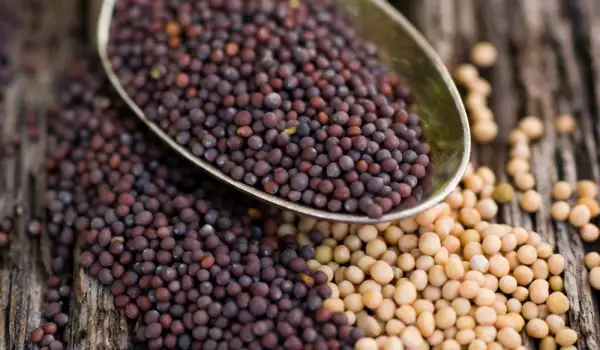
- Black mustard (Brassica Nigra);
- White mustard (Brassica alba);
- Brown mustard (Brassica juncea);
Black seeds have the sharpest taste. Mustard is made from the white one, which are actually yellowish and the brown are very common in India, China and Japan, where they are used as a spice for salads.
When mustard seeds are chewed, a bitter flavor can be tasted at first, which then turns into a sharp and pungent flavor, which is well known from mustard.
All three species originate from different parts of Europe and Asia.
White mustard is a spice from the eastern parts of the Mediterranean. The brown one is from the foothills of the Himalayas and the black one comes from the Middle East.
Application of mustard seeds in cooking
In Western countries, mustard seeds are used for marinades, brines and canning. It is a mandatory spice in pickles, sometimes put in sauerkraut, you can also prepare green tomatoes with mustard. Homemade ketchup with mustard also becomes very appetizing. It is sometimes combined with horseradish, black pepper, garlic, onion and dill. As it is a strong spice, 1 tablespoon of mustard seeds is added to 10 liters of liquid.
In India, mustard is very valuable. Use its leaves in salads, fry the seeds in oil, until they pop and then add them as a side dish. It is also consumed raw. Sprinkle rice dishes with brown mustard. They also make various curry recipes where mustard is combined with other spices.
White mustard can often be found in spice mixes used in cooking meat and seafood.
Of course, mustard is the most famous culinary magic of all, based on mustard seeds. It is safe to say that mustard is one of the great achievements of modern cuisine, because without mustard recipes, sandwiches and snacks would not have the taste we know now.
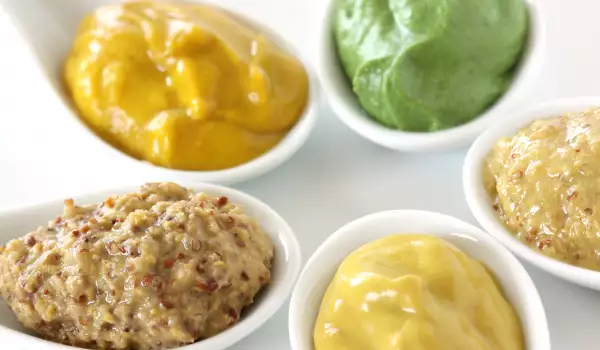
Mustard is made according to a recipe known to almost every lover of this supplement. Mustard seeds are grinded in bulk, the fat is removed by pressing, vinegar, salt and sugar are added, as well as other spices such as garlic, tarragon, allspice, cloves and cinnamon and then fermented for 24 hours. Dozens of types of mustard, known to everyone, are widely used in cooking.
Use of mustard seeds for medicinal purposes
Mustard seeds are rich in phytonutrients, also known as glucosinates. The human body converts them into isothiocyanates. They have antitumor properties. They stop the division of the tumor cell and stimulate the death of existing tumor cells. They are useful in bladder cancer and the addition of mustard as a spice in the diet is considered a prevention against this disease. They also protect against stomach cancer.
Because they contain selenium in large quantities - about 21 percent of the recommended daily dose - only 1 tablespoon of mustard seeds, it also serves as a regulator of thyroid function. Selenium is an antioxidant that protects against free radicals and also has a beneficial effect on thyroid hormones.
There is also an anti-inflammatory in mustard seeds, it is called curcumin. Turmeric is fatty soluble pigments that give the seed its yellow color and are also found in turmeric, ginger and other yellow herbs and spices. Curcumin is an antioxidant with powerful anti-cancer and anti-inflammatory properties. It relieves pain in arthritis and intestinal inflammation.
Magnesium, in combination with selenium, gives mustard seeds anti-inflammatory and warming properties. In case of muscle fever, colds, a warming compress with mustard seeds is recommended.
Because mustard seeds are a good source of nutrients, their use helps build cell membranes in the brain. Calcium, potassium, iron, manganese, phosphorus and zinc are the beneficial elements, which support brain activity.
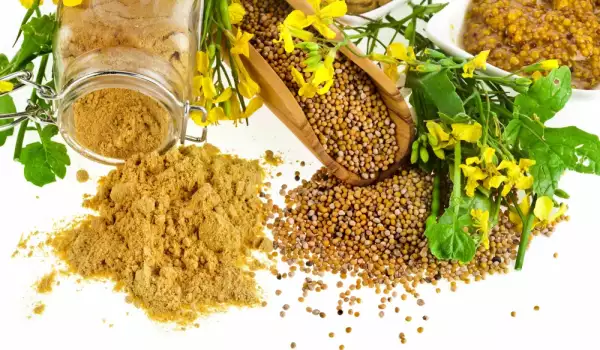
Mustard seeds are recommended for psoriasis. They has both protective and healing effects in this autoimmune disease.
Mustard seeds cause protective vomiting in case of poisoning. Decoction of the seeds cleanses the body and is popular for alcohol poisoning.
Mustard warms up and is useful for people who suffer from nerve damage. It has a stimulating effect on the nervous system.
Because it contains carotene, lutein and zeaxentin, vitamins A, C and K, they make them rich in antioxidants that slow down the aging process.
Manganese, copper, iron and other minerals in mustard improve immunity, and contain nutrients that strengthen the body's resistance to disease. Mustard seeds also cure bronchitis and other colds and reduce fever. They regulate blood pressure, reduce migraine attacks and keep asthma under control.
Other mustard seed products
Mustard seeds are also used to make mustard flour after grinding. Mustard flour is used mainly in folk medicine in the treatment of various diseases. They are used to make an effective ointment for joint pain.
They are also very effective for coughs. An ointment is prepared from the flour, which is applied to the chest and a warming compress is made.
The health benefits of mustard flour have also been tested for internal use. Suitable for cardiovascular problems, stomach pain, kidney stones and others.
Mustard flour can also be used to make homemade mustard for culinary use.
Mustard seeds are 100 percent a natural product with proven action, which have been widely used over the centuries for their many benefits.
Some interesting facts about mustard
Different crops use Sinapis in different ways. They sew it inside the clothes for courage and security. It is scattered around the house for exorcism and other ritual activities.
Mustard seeds are so popular, that they are mentioned in the New Testament. There the Kingdom of Heaven is compared to a mustard seeds.
The unique healing properties of mustard seeds are due to the fact that the mustard is of the genus Cruciferous, which is very good for human health.
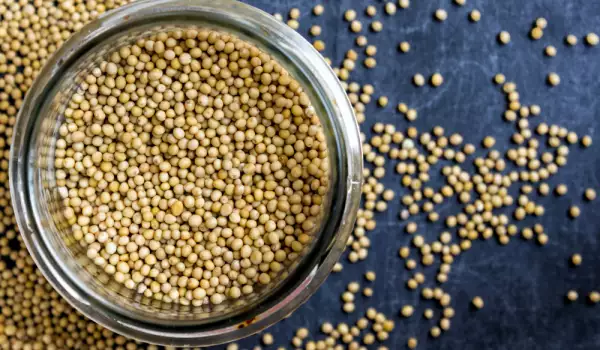
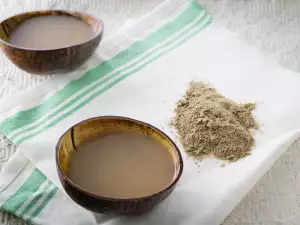
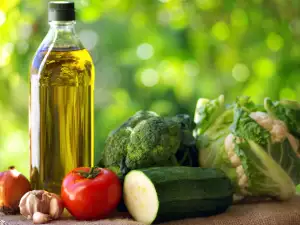

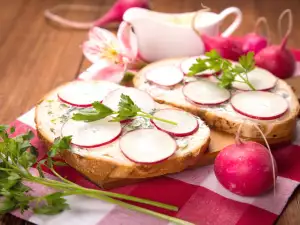
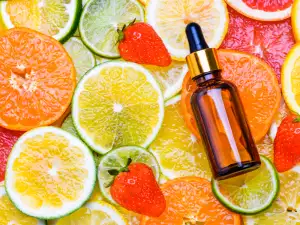
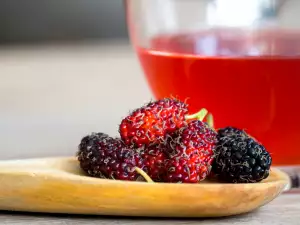
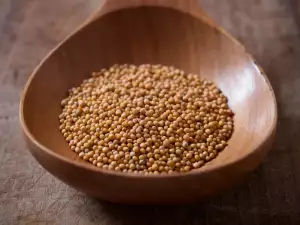
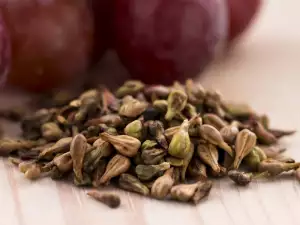
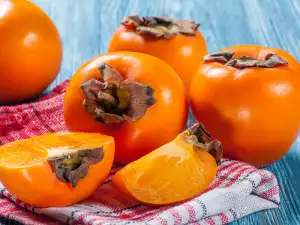
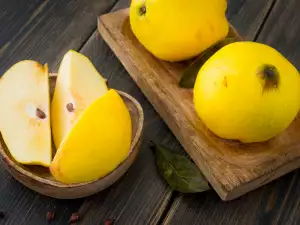
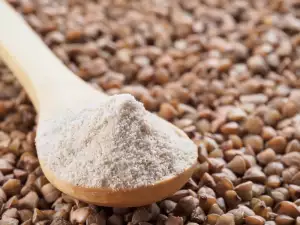
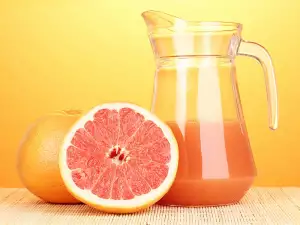
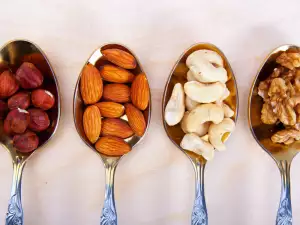
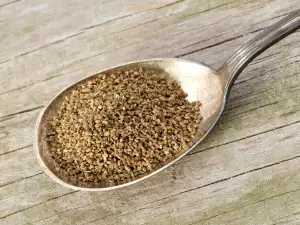
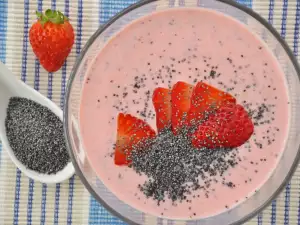




Comments